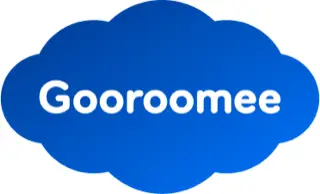Audio Working Group Updates and Demos
By Hongchan Choi
Transcript
Hi, I'm Hongchan.
I'm a co-chair of the W3C Audio Working Group.
Today, I will be talking about some updates from our group.
And I'm also really excited to share some cool apps and projects from our developers.
This slide deck you see today is available in this URL [bit.ly/audio-wg-updates-2023] Before we jump into updates and the news, I want to quickly go over a few things about the Audio Working Group.
Our group's primary goal is to design APIs, and produce spec documents for real-time audio and MIDI.
If you're not familiar with these yet, the Web Audio API is a JavaScript API that allows you to write JavaScript code to process audio in real time within the browser.
The Web MIDI API is similar, but it's designed to support MIDI in the browser.
This journey started around 2010 with a group of people from many different companies like Google, Mozilla, BBC and others.
They produced the first public draft of the Web Audio API in 2011, and now all major browsers have been supporting it in many years.
Then something exciting happened in 2015.
We introduced a powerful capability to the specification: Audio Worklets.
This feature brought us into the Renaissance of web audio applications by allowing custom audio processing with JavaScript on the audio render thread.
Suddenly, compiling C++ code into WebAssembly and running it with the Web Audio API became a possibility.
A few years later, the Web Audio API became the official W3C recommendation in 2021.
Alright, enough history.
Let's talk about something more recent.
Since AudioWorklet was first released in Chrome in 2016, it is now supported by all major browsers.
According to usage data collected by the Chrome team, AudioWorklet is now the fourth most popular feature in the Web Audio API.
To make this transition easier to everyone, a few developers contributed to the Emscripten project to properly support AudioWorklet in its toolchain.
The Working Group, the browser implementers, and developers are all working toward the same goal!
Another exciting piece of news is that Web MIDI is now supported by both Chrome and Firefox.
This is a big step forward in advancing the Web MIDI API specification to W3C recommendation status.
To strengthen the privacy and security aspects of the API, we also decided to add a blanket permission to the MIDI API surface.
Firefox already implemented this, and the Chrome team is currently working on it as well.
The most recent projects from the working group is the outputLatency property and the output device selection support.
The former is already fully supported by Firefox and Chrome, and the latter is available in Chrome and is in development in Firefox.
These additions have been the goal of the current working group charter—we want to provide low-level capabilities to developers with user privacy and safety in mind, so they can build more powerful web applications with confidence.
Now, let's take a look at some of the cool apps and projects that developers have created using the Web Audio and MIDI API.
Well, this shouldn't need any explanation.
A developer built an Audicity clone that runs in a browser tab.
Cleanfeed is a next-generation audio recording system that makes distributed media production a reality.
You can use it for podcasting with remote guests or recording high-quality voiceovers for visual media.
It is pretty good, so it was even used in the production of some Netflix shows!
Last year, it won an Emmy Award in Engineering, Science, and Technology.
So, podcasting apps are on the rise, and Adobe is also getting in on the action with their Adobe Podcast app, which also uses the Web Audio API.
Ableton, a household name in the music industry, has also been working hard to push the boundaries of web music technology.
The Learning Synth project is the most advanced textbook on sound synthesis and computer music, and it shows what web music apps can be.
They can be more than just toys or audio recorders/editors.
Then we have a solid group of web-based music production tools: AmpedStudio, BandLab, Soundation, SoundTrap and others.
These tools are so accessible and readily available to anyone, they have become the new normal.
Even my high school son uses them in his music class without knowing what the digital audio workstation is!
Or should I just call them Web Audio Workstation now?
Lastly, I'm going to wrap up this update with an impressive demo from a web application that is currently in development.
Heardsound Studio is the next-generation web audio workstation powered by machine learning.
With this app, you can do some superpower stuff like automatic beat mashups and source separation (separating a mixed stem into multiple audio tracks).
Do check out their demo videos.
I'm so proud of all the amazing things web audio developers have created with web music technology.
It is so exciting to see what the future holds!
If you want to be a part of this, come join us at the W3C Audio community group.
It is a friendly space where you can meet other people who are passionate about audio, music and the web.
Keep on rocking the web and thanks for watching!





